In 1971, top oil and natural gas companies from the United States, Mobil Oil, were delighted to find a new mine in Arun, North Aceh. It did not take long for them to build a new factory and start exploitation at that location. This work can be smooth because they formed a partnership with the Indonesian military which at that time became an important part of the New Order regime. Six years later there was an armed attack that temporarily halted factory operations. The news spread quickly to the capital Jakarta because there was a US engineer who died, while one person was seriously injured. The event mastermind was later identified as the Free Aceh Movement (Gerakan Aceh Merdeka, GAM), an armed group guerrilla against the Indonesian government under the command of Teungku Hasan Muhammad in Tiro alias Hasan Tiro. Resistance breeding in Aceh has existed since the 1800s when the area became gravel in an effort to round the Dutch colonies. The Acehnese are notoriously stubborn in defending their ancestral lands. They were one of the last areas to surrender to the colonial government, even after a brutal, three-decade (1873-1904) Aceh War. When Indonesia became independent, Aceh was incorporated into one of its territories. The people of Aceh are making great contributions to the Republic through donations of funds for the purchase of Indonesia's first Seulawah airplane. But Jakarta's decision in 1950, which lowered the status of Aceh into residency under North Sumatra Province, sparked disappointment. As a result, Teungku Daud Beureueh, a prominent Acehnese and former Military Governor of the Revolution, expressed opposition to Jakarta. He then declared to join Darul Islam / Indonesian Islamic Army (DI / TII) led by S.M. Kartosuwirjo. In fact, before Daud Beureueh stirred up resistance, he was a supporter of the proclamation of Indonesian independence. At the end of 1945, there was a clash between those who supported Indonesia and those who sided with the Dutch. The ulama (teungku) who are members of Daud Beureueh's Union of Ulemas All Aceh (PUSA) are in conflict with pro-Dutch nobility (teuku). This conflict triggered a social revolution known as the Cumbok War and won by the teungku. These factors further add to the disappointment of Beureueh and reinforce his conviction for resistance. DI / TII Aceh was successfully tamed by the government in 1962, but the embers of the conflict never really extinguished. President Sukarno then gave Aceh a special status to resolve the resistance. With this status, Aceh is entitled to regulate religion, customary law, and matters around the world of education.
Hasan Tiro Continuing the Resistance of David Beureueh Daud Beureueh was still in guerrilla until early 1962, but the next resistance relay was more initiated by Hasan Tiro. He lived in New York since the early 1950s to work at the United Nations office in the special department of Indonesian affairs. In 1953, Tiro, who loved Coca-Cola, returned to Aceh to support Daud Beureueh's cause. And by the mid-1970s he was steadily consolidating his comrades. Exactly today 41 years ago, on 4 December 1976, GAM officially stood up. Hasan Tiro declared resistance to the Indonesian government in the Halinon Hills, Pidie, and established himself as Wali Nanggroe (head of state). His vision is the romance of the past when Aceh stood as an independent country. He stated emphatically that there had been "the illegitimate transfer of sovereignty of ancestral lands from the Dutch as old colonialists to Java as a new colonialist." Romanticism mainly refers to the past kejayan of the Kingdom of Aceh during the time of Iskandar Muda. In the Kingdom of Atjeh Sultan Iskandar Muda (1607-1636) (2008), the historian Denys Lombard shows how prosperous Aceh is at that time. In fact, Aceh was one of the first Asian kingdom to have diplomatic relations with the Kingdom of the Netherlands. The glory period is remembered with a feeling of nostalgia. But on the other hand, as revealed by Otto Syamsuddin Ishak in Aceh Post Conflict: Contest 3 Varian Nasionalisme (2013), Acehnese feel bitter at the same time while witnessing the current reality of Aceh. The romance of the past glories comes simultaneously with the bitter experience of prolonged conflict which is only a relatively short pause. Michael L. Ross, in his analysis entitled "Resources and Rebellion in Aceh, Indonesia" in Understanding Civil War: Evidence and Analysis (2005), writes that one of Hasan Tiro's main motivations during guerrilla conflict with GAM was the sovereignty issue of Aceh's natural resources. It also serves as a strategy of mass support withdrawal. Still in the declaration of his resistance, Tiro said Aceh is getting poorer under Indonesian colonialism because life expectancy is at 34 years and continues to decline. He also criticized Jakarta for being ungrateful because since independence it has received tremendous revenues from the exploitation of Aceh's natural gas. Its value is claimed to reach $ 15 billion per year, which Tiro condemned only to build Java.
Through the fact-checking method, Ross explained that what Tiro said about life expectancy and a profit of $ 15 billion was wrong. But he is interested in the strategy of withdrawing the mass support of Tiro who did not mention the problem of Aceh which is based on Islamic politics-an issue that fueled the resistance of Daud Beureueh. According to Ross, Tiro is concerned that the issue of the Islamic state will alienate international support for GAM. History records almost no separatist movements that have no support from abroad. Tiro focused on Aceh's status as the largest natural gas producer in Indonesia. Near the city of Lhokseumawe, for example, there are gas mines that generate up to $ 2-3 billion per year for export for 20-30 years. Mobil Oil, which in 1999 merged with Exxon Mobil Corporation, established a joint venture with Pertamina and Jilco (a Japanese consortium company). Production that began in 1977 reaped its maximum results in 1988, said Dawood, Dayan, and Syafrizal in a report titled "Aceh: The Boom and Enclave Development LNG" as stated in Unity and Diversity book: Regional Economic Development in Indonesia Since 1970 (1989 ). Despite successfully opening new jobs, natural gas exploitation projects by foreign and state companies are considered many Acehnese are not enough to employ much more than to prosper the local people. Mobil Oil also in fact recruited more people from outside Aceh, especially Java, on the grounds of ability and more experience.
Hasan Tiro once felt for himself how he was eliminated from the struggle for the exploitation of natural gas. According to Ross, in 1974, Tiro participated in an auction for a natural gas pipeline project in Aceh, but lost to Bechtel, a US firm (p.41). The later accusation was the failure to pass the tender that triggered GAM's first invasion of the Mobil Oil factory in Arun in 1977. This was disputed by Murizal Hamzah in Hasan Tiro: The Long Road to Peace in Aceh (2014). The seeds of Tiro's resistance, he says, have grown since the 1960s. But after all, the attack was the one that triggered the reverse resistance of the Indonesian government. Jakarta feels its investment in Aceh will be disrupted by the existence of GAM. Tiro and his followers are certainly not comparable opponents because of the loss of personnel and weapons. Many GAM members died, civilians accused of supporting GAM were among the victims, and in 1979 Tiro was forced to flee abroad. The first wave of GAM resistance, according to Michael L. Ross's revocation, was finally extinguished. Resistance Full of Violence The second wave came in the mid-1980s. GAM personnel returning from exile recruit new members to be given military training as they have practiced abroad. Some are trained in the Libyan army. The socialist state under Muammar Gaddafi's command, plus Iran and a number of other countries and donor agencies, helped fund and mobilize GAM in this second wave of resistance. GAM also appears more solid and strong in the guerilla field. Kirsten E. Schuhlze in The Free Aceh Movement (GAM): Anatomy of a Separatist Organization (2004) stated that since 1986 GAM has expanded its support to the north and east. Recruitment is relatively easy in both areas, especially for those from Aceh who live in areas with high economic disparities due to urbanization of migrants (from Java) and uncontrolled industrialization.
In this phase GAM personnel are again using the sentiment of natural resource sovereignty. They spread the propaganda that natural gas and other properties in Rencong Land were exploited in the eyes of the naive and non-poor, while the migrants were getting richer. This propaganda proves to be effective and recruitment can work well especially for rural male targets. Reverse resistance from the Indonesian government in the second wave is more bloody. Until the mid-1990s, 200-750 GAM combatants were confronted by more than doubled Indonesian troops. The Government of Indonesia also established Aceh as a Military Operation Area (DOM) and deployed a special counterterrorism force. The escalation of conflicts extends as well as makes the number of wounded, displaced from the dwelling, as well as those who die more than the first wave of resistance. The most vulnerable are civilians labeled as betrayal status by both fighting parties. According to various versions, the total death toll is in the range of 2,000-10,000, both from militia groups and civilians. Civilian casualties are higher because the two hostile parties are both engaged in a series of acts of violence and human rights abuses. According to Amnesty International's report, the Indonesian military is suspected of carrying out extrajudicial executions, village burnings, kidnappings, rape and torture of Acehnese who are accused of GAM sympathizers. While GAM personnel are accused of extrajudicial execution of Indonesian military informers and attacking civilian institutions such as schools and others.
Violence by the Indonesian military will someday be regretted by the emergence of a third wave of resistance, which is still according to Michael L. Ross's revocation, occurred after the fall of Soeharto. President Habibie withdrew his troops from Aceh as the realization of a commitment to safeguard the Reformation. However, this situation was used by GAM to consolidate its remaining strength. They recruited young Acehnese by exploiting a brutal narrative of Indonesian military behavior during the DOM enforcement in Aceh. Violence in Aceh was re-enacted by GAM from late 1999 by targeting local government officials and migrant populations from Java. New guerrilla capital gained by smuggling illegal weapons from Thailand.The Government of RI again sent more troops to Aceh, especially during the era of President Megawati Sukarnoputri. In 2001-2002, the combination of army and police personnel in Aceh increased to 30,000. Within one year, the figure rose drastically to 50,000. As a result, the repression to civilians in Aceh again increased. During the third wave of resistance, more than 4,000 lives from the military, GAM, and civilian armies flew. Peace-related talks have actually been between GAM and the government since the 1990s, but have never reached an ideal peace agreement. The giant tsunami disaster that swept Aceh on 26 December 2004 became an important factor that made GAM weaker after the Indonesian government broke their third wave of resistance.
End of Resistance and Peace Agreement On February 27, 2005, GAM representatives and the government of Indonesia started the negotiation phase in Vantaa, Finland. Former Finnish President Martti Ahtisaari served as a facilitator. On July 17, 2005, after negotiating for 25 days, Indonesia succeeded in reaching a peace agreement with GAM in Helsinki, Finland. The signing of the memorandum of peace was held on August 15, 2005. The peace process is then monitored by a team called Aceh Monitoring Mission (AMM), which consists of five ASEAN countries and several countries joined in the European Union. Among the key points is the Indonesian government will also facilitate the formation of local political parties in Aceh and amnesty for GAM members. All 840 weapons were transferred from GAM to AMM, and the process was completed on December 19, 2005. On December 27 of the same year, GAM through military spokesman Sofyan Dawood stated that their military wing had been formally disbanded.
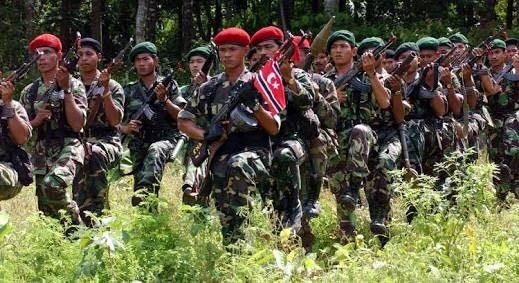
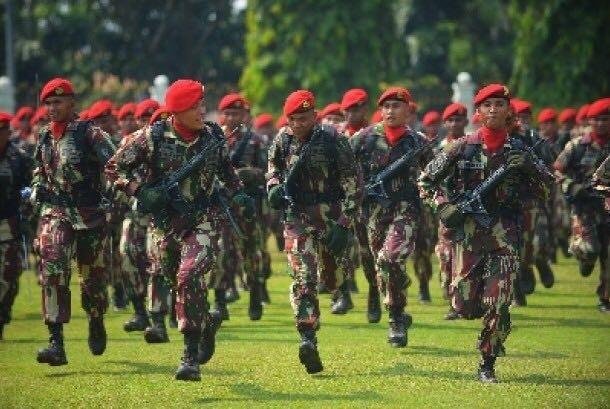
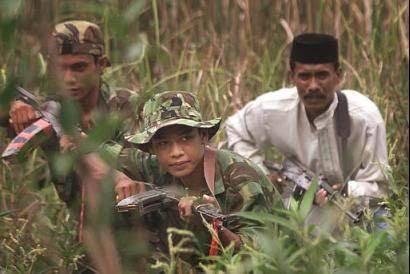
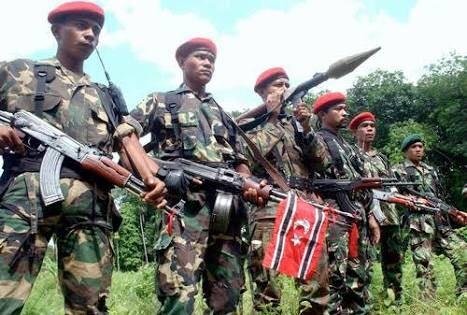
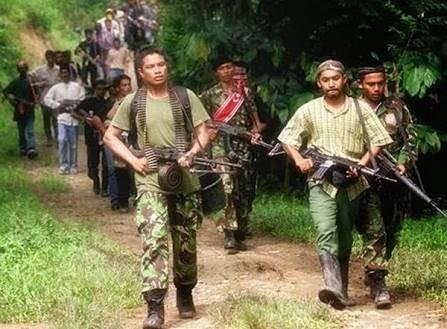
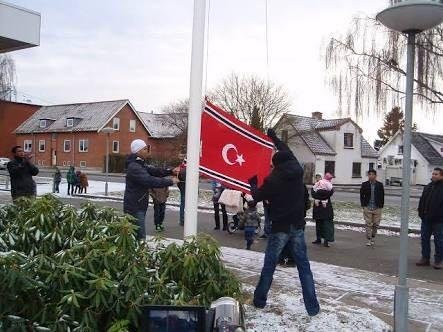
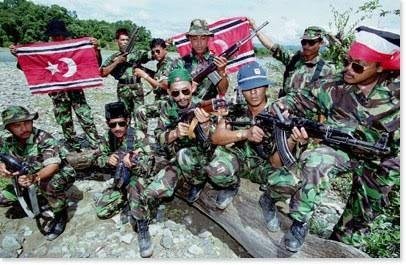
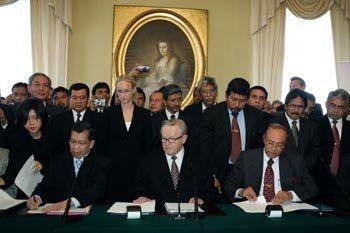
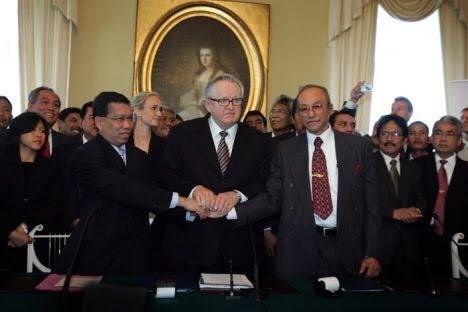
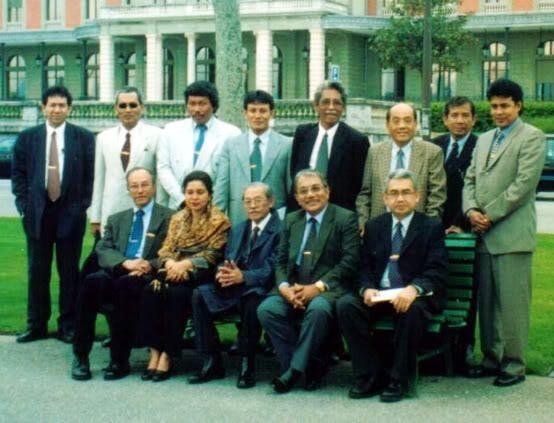
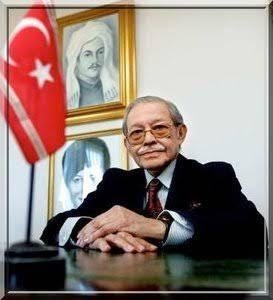
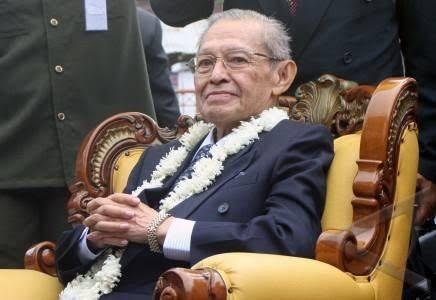
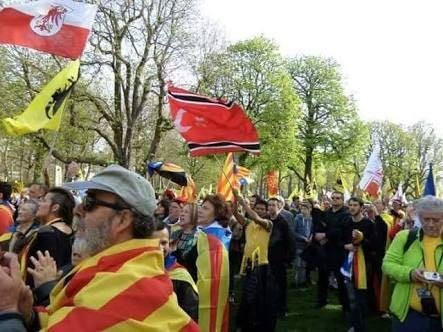
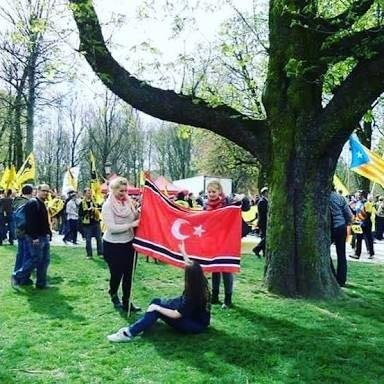 1. item
1. item
Authors get paid when people like you upvote their post.
If you enjoyed what you read here, create your account today and start earning FREE STEEM!
If you enjoyed what you read here, create your account today and start earning FREE STEEM!
Source: https://steemit.com/history/@parco/gam-born-for-the-sovereignty-of-aceh-s-natural-resources-hasan-tiro-adalah-pahlawan-aceh
Not indicating that the content you copy/paste is not your original work could be seen as plagiarism.
Some tips to share content and add value:
Repeated plagiarized posts are considered spam. Spam is discouraged by the community, and may result in action from the cheetah bot.
Creative Commons: If you are posting content under a Creative Commons license, please attribute and link according to the specific license. If you are posting content under CC0 or Public Domain please consider noting that at the end of your post.
If you are actually the original author, please do reply to let us know!
Thank You!
Downvoting a post can decrease pending rewards and make it less visible. Common reasons:
Submit
Jika pemerintah dan para ahli tidak mau mencatat sejarah Aceh yang satu ini, mari kita mengukirnya di steemit, insyaallah anak cucu kita bisa membacanya di kemudian hari.
Downvoting a post can decrease pending rewards and make it less visible. Common reasons:
Submit
Amin semoga aceh merdeka
Downvoting a post can decrease pending rewards and make it less visible. Common reasons:
Submit
#blockchain is an history share place, its good one brother! It helps us know about our region issues. I know it before but not detail as it. Success for you!
Downvoting a post can decrease pending rewards and make it less visible. Common reasons:
Submit
thank you .. i am happy with you who ever want to know the story about the history of events in aceh .. hope we generations that make history let us find out how the true history for each region so that we survived the history that we proclaim to history that tidah we should know alias bad but we are observing it is very wrong for our ancestors who has been fought for us his children and grandchildren.sekali terimaksih bolt brother hope never stay history.karena history is a struggle of our ancestors
Downvoting a post can decrease pending rewards and make it less visible. Common reasons:
Submit